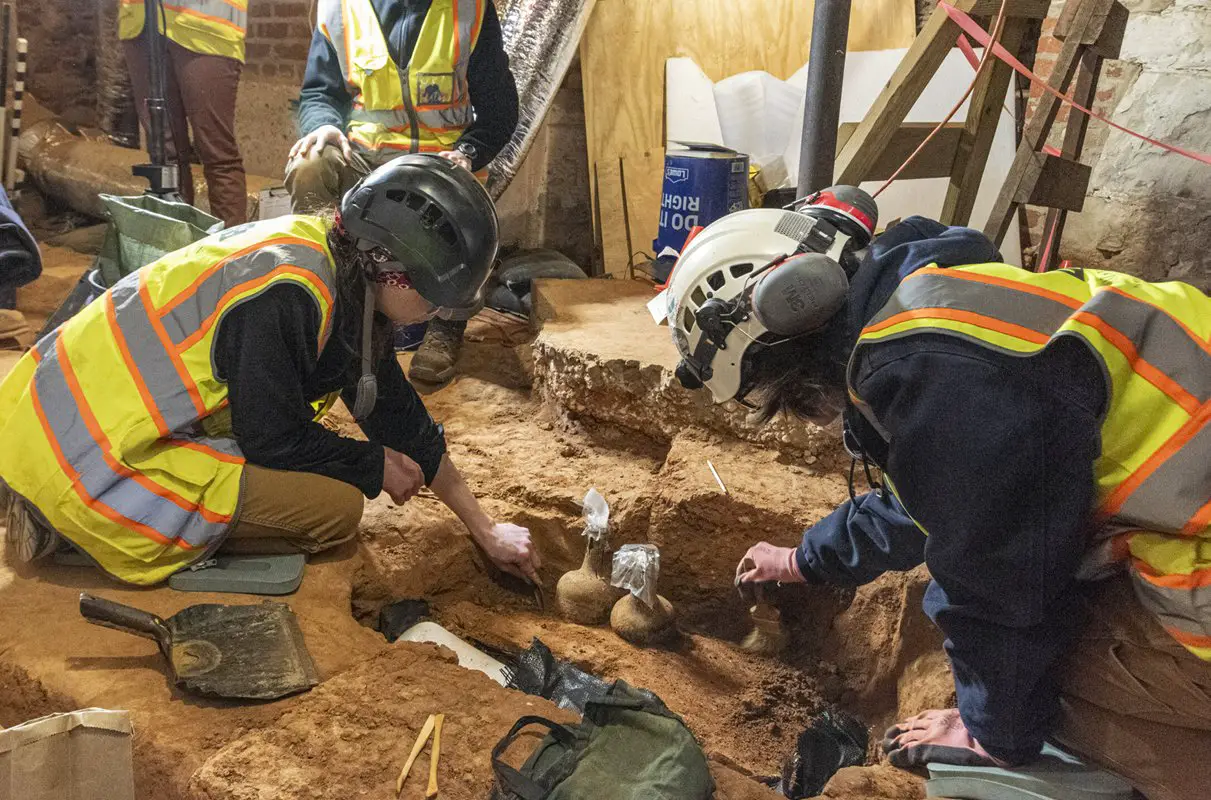As part of a $40 million Mansion Revitalisation Project, archaeologists have discovered two sealed 18th century glass bottles at George Washington’s Mount Vernon.
Mount Vernon is the former residence and plantation of George Washington, a Founding Father and the first president of the United States.
Construction of the present manor began in 1734 by George Washington’s father, Augustine Washington, which was built in incremental stages by an unknown architect.
Mount Vernon was designated a National Historic Landmark in 1960 and is listed on the National Register of Historic Places. The site is owned and maintained by the Mount Vernon Ladies’ Association, the oldest national historic preservation organisation in the United States.
From 2023 to 2026, the Mansion Revitalisation Project is conducting a landmark preservation project to safeguard the Mansion’s original building fabric and ensure its structural integrity.
During phase 1 of the project, archaeologists conducted small-scale excavations in the Mansion cellar where they discovered two intact European-manufactured bottles which date from the 1740s to 1750s.
Both bottles are made from a dark green glass and contain a liquid, which were recovered from a pit buried beneath the cellar’s 1770’s brick flooring.
Mount Vernon President & CEO Doug Bradburn, said: “We have made a number of interesting discoveries, including this blockbuster find of two fully intact glass bottles containing liquid that have not been seen since before the war for American independence.”
The bottles were sent for conservation and their contents shipped to a laboratory for a scientific analysis in a controlled environment.
The analysis revealed that the liquid contents still had the characteristic scent of cherry blossoms (familiar to residents of the region during the spring season), and also contained preserved cherries, including the stems and pits.
Header Image Credit : Mount Vernon Ladies’ Association
Sources : George Washington’s Mount Vernon





